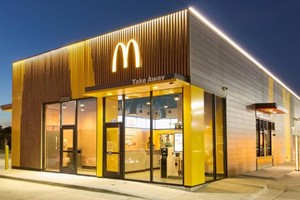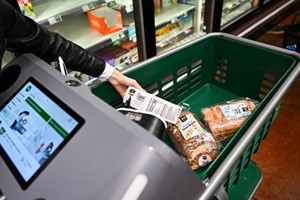GCC foodservice market
The GCC foodservice market was valued at USD18.8 billion in 2014 and is expected to grow at a CAGR of 6.8 percent to reach USD24.5 billion in 2018, according to Al Masah Capital. Saudi Arabia led the region, with total foodservice sales of USD8.9 billion, accounting for nearly half of the GCC market. The UAE was the second largest contributor, with total sales of USD5.3 billion generating 28 percent share in the region, followed by Kuwait (USD1.9 billion), Qatar (USD1.3 billion), Oman (USD1.1 billion) and Bahrain (USD0.4 billion). Fast food segment or Quick Service Restaurants (QSR) has emerged as the largest, accounting for 58.2 percent (USD10.9 billion) of the GCC food services market in 2014, followed by Full Service Restaurant (FSR) at 31.5 percent (USD5.9 billion) and Caf� & Bakery segment at 10.3 percent (USD1.9 billion). The foodservice sector can broadly be categorized in to following segments: Full Service Restaurants (fine and casual dining); Quick Service Restaurants (fast food); Caf� & Bakery; and Lounges & Bars.


Growing markets for international cuisines
Presence of people from various nationalities has carved a large market for international foods in the region, more specifically in the UAE, according to a recent report by Alpen Capital. Moreover, a high spending power enables consumers to try new dishes. According to a recent survey conducted among the UAE residents, 88 percent of the respondents were willing to try new cuisines and concepts. As a result, several multi-cuisine restaurants have been opening throughout the region. According to the aforementioned survey, Indian cuisine was the most preferred in the UAE, followed by Italian, Lebanese and Chinese. Among the multiple culinary options available, the Japanese cuisine is also gaining popularity. The cuisine is popular in Saudi Arabia as well, where the Japanese Embassy in collaboration with Dubai-based food traders held a small food exhibition recently to showcase Japanese cuisine to Saudi Arabian businessmen, officers and media.


Takeaway services
The demand for takeaway and home delivery services has swelled over the past 5 years, according to Al Masah Capital, driven by factors such as busy lifestyle, young and growing population base and tendency to order deliveries all year round. In a KPMG - 2015 UAE Food & Beverage Survey Report, nearly 60 percent of the respondents in the UAE order takeaway at least once a week. Similarly, delivery/take-away subsector contributes 23 percent of the total food service market in Saudi Arabia. One of the key factors supporting the growth of home delivery or takeaway services in the region is the rise of online ordering platforms. According to PwC, the online food ordering market is expected to reach USD218 million by 2020 owing to the well urbanized regions, changing lifestyles, and emerging online culture of the young, tech savvy population.
Increasing competition
The GCC foodservice market is highly competitive across all segments and companies need to continuously re-invent themselves (by developing new products, adjusting pricing strategies and expanding geographically) to drive footfall and attract consumers to gain market share, according to Al Masah Capital. The current market growth model is primarily focused on geographic expansion of outlets but as the market matures, regional players will require more sophisticated strategies to remain competitive in the near term. To stand out, regional and small foodservice operators must pay attention to service, on outlet appeal, and on quality to match the up-market service models of the major players. Adopting a clear, differentiated strategy and implementing global best-practices to achieve sustainable competitiveness and growth is critical to overcome impending threats in the market, and capture a share of growth without losing profitability. The total number of outlets in the UAE foodservice sector stood at over 5,818 and is expected to rise to around 6,933 outlets by 2018, growing at a CAGR of 3.6 percent. The Cafes & Bars segment is expected to witness the fastest growth (5.1 percent CAGR) in terms of presence in the UAE with around 2,088 outlets by 2018.














